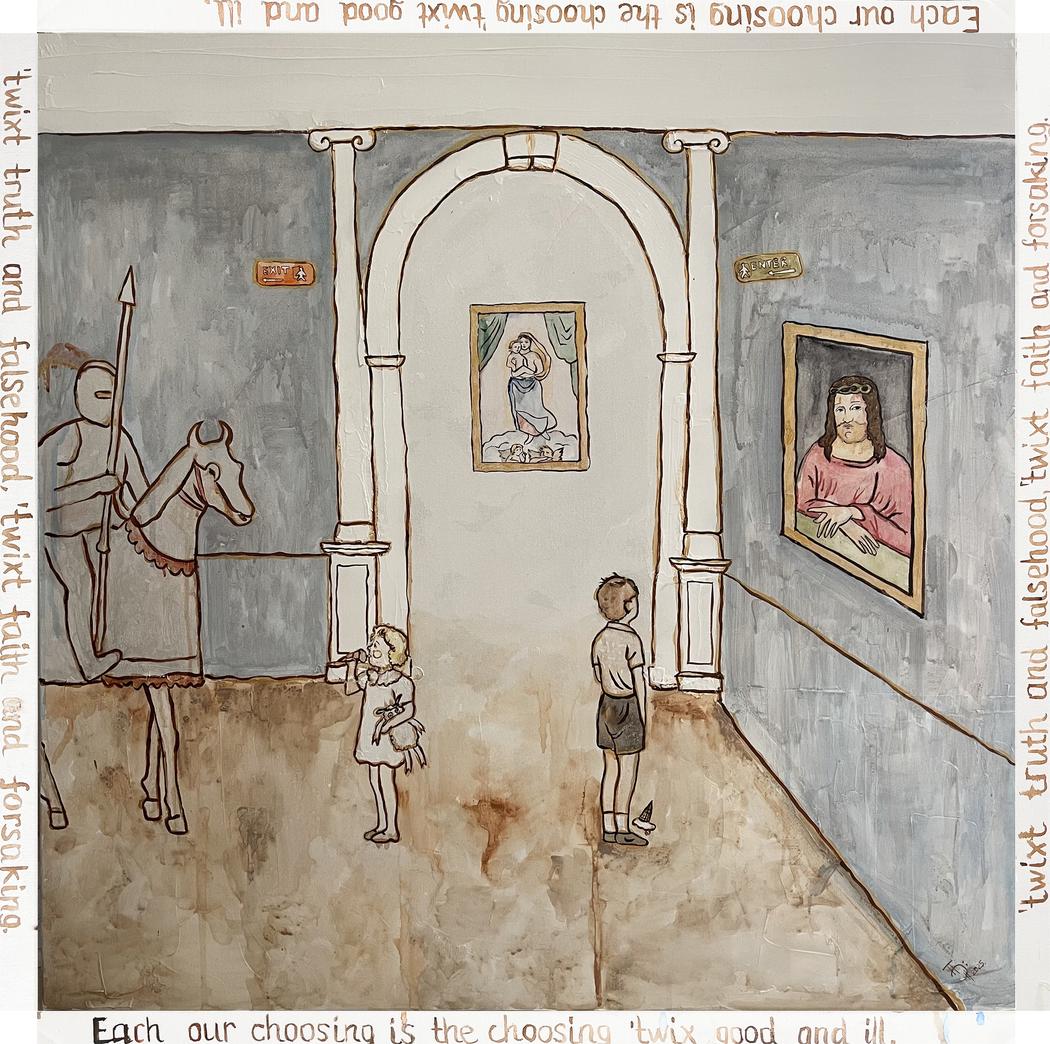Olga Puzikova (Bobyleva)
Where do you live: UAE, Dubai
Your education: Fine Arts Program, Art School, Samara, Russia (2000–2009)
Describe your art in three words: Symbolic · Philosophical · Evolving
Your discipline: Contemporary painting
 Olga Puzikova (Bobyleva) | Wildflowers | 2025
Olga Puzikova (Bobyleva) | Wildflowers | 2025
You mentioned that your artistic style evolves along with your life. What recent changes in your environment or experiences have had the strongest impact on your work?
The global events of recent years have inevitably influenced my inner state and the way I experience the world. Along with that, personal changes such as becoming a mother and moving abroad with a small child have deeply affected me. It was during the period of gradual stabilization that I realized my paintings had transformed dramatically. My artistic language changed together with me, reflecting this new stage of life and perception.
Many of your paintings feel symbolic and narrative-driven. What themes or messages do you explore most frequently in your art?
In my work, I try to understand how a person finds their path and stays true to themselves. The search itself is what matters, not the destination. I believe there is always a way out, even from the most difficult situations, and that when we follow the right direction with honesty, something greater often helps us move forward.
 Olga Puzikova (Bobyleva) | Once At The Museum | 2025
Olga Puzikova (Bobyleva) | Once At The Museum | 2025
Your works often feature characters placed in surreal or philosophical settings. Who are these figures — are they self-portraits, invented personalities, or universal symbols?
There are a few recognizable figures in my works. For example, one of my paintings features the image of Gerasim of Jordan, but the characters I portray are often inspired by the faces of strangers. Most of them are collective or symbolic figures that exist somewhere between reality and imagination.
How do classical techniques you learned in childhood influence your current contemporary and expressive style?
This question made me reflect, and it brought me to quite an amusing realization. My background in classical painting gave me a strong technical foundation, and now I can deliberately break those rules to achieve greater expressiveness or other artistic goals. That training also allows me to work freely with color and paint from memory, as I learned to truly observe and understand the form, structure, and tone of what I see.
 Olga Puzikova (Bobyleva) | Fog | 2025
Olga Puzikova (Bobyleva) | Fog | 2025
The text integrated into several works adds deep meaning. What role does language play in your artistic storytelling?
Just as in film or literature, where a director or writer lets us hear the inner voice of a character, I use text to offer a subtle hint about the message behind the work. My paintings often turn out to be metaphorical images, and each viewer sees something different in them. But for those curious about what the artist wanted to say, the words become a small key that allows them to read my thoughts, almost like a brief act of telepathy.
You have painted commissioned portraits in the past. How did creating personal art differ from creating commissioned pieces with specific expectations?
Because of my analytical and emotionally receptive nature, creating commissioned portraits was always a challenge for me. I often felt that my creative energy was directed in ways that didn’t feel natural, and it required more effort to maintain authenticity. Personal work, on the other hand, allows my ideas to flow freely and my artistic voice to emerge more genuinely.
 Olga Puzikova (Bobyleva) | Enigmatic City | 2025
Olga Puzikova (Bobyleva) | Enigmatic City | 2025
Your palette often feels soft and nostalgic, yet your compositions are full of inner tension. How do you balance these contrasting emotions on canvas?
I let the composition and subject guide me rather than trying to force a balance. My goal is never to impose an idea on the viewer, but to invite them into a space of calm reflection guided by the colors. I often choose colors and arrange the composition intuitively, in accordance with the meanings the work carries.

Leave a Reply